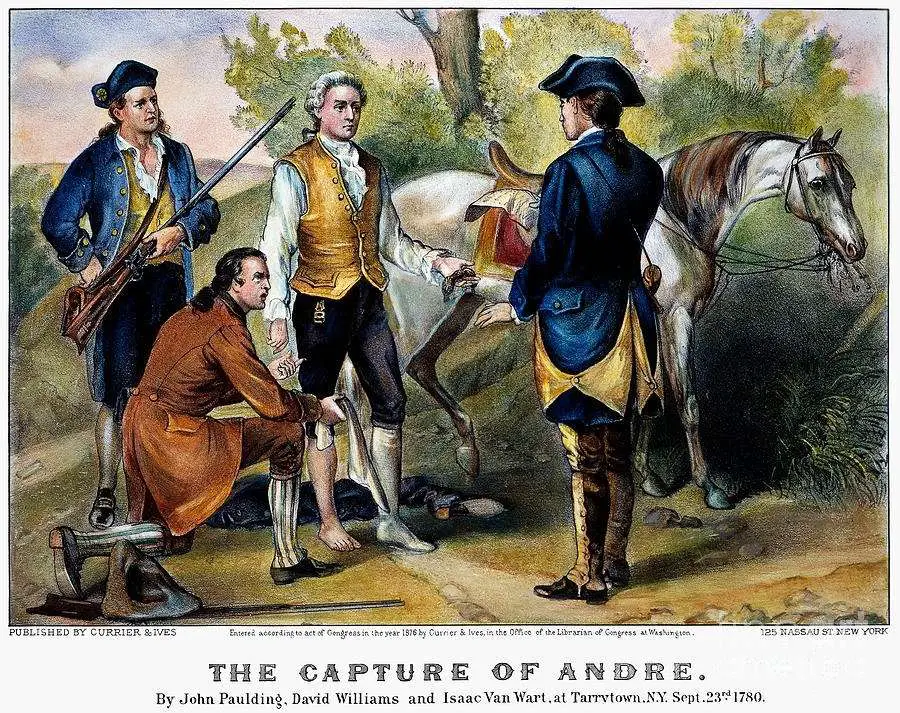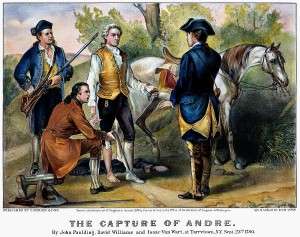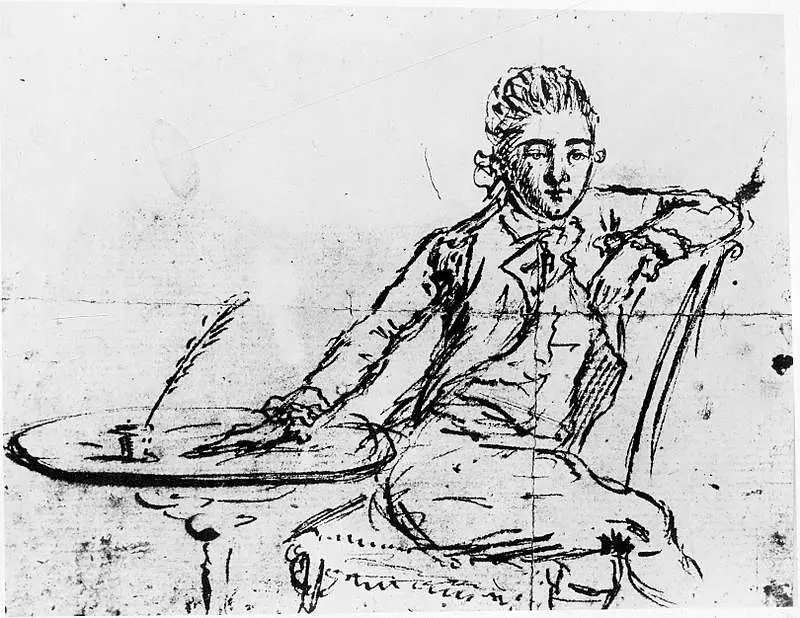On Oct. 2, 1780, British intelligence officer John Andre met his awful fate with courage, much as his American counterpart Nathan Hale met his four years earlier. For Andre died on the gallows as a spy, though he probably would have avoided that fate had the British spared Hale.
John Andre conspired with Continental Army Brigadier General Benedict Arnold to surrender the fort at West Point to the British. Arnold, recently appointed commandant at the fort, turned traitor because of greed and resentment. The British offered to pay him 20,000 pounds for the deed, more than $1 million today.
American militiamen captured 30-year-old John Andre on his way to New York City. A wealthy, London-born Huguenot, he had served 10 years in the 7th Royal Fusiliers. The Americans had captured him once before, at Fort Saint-Jean in Quebec, and held him in Lancaster, Pa.
After he gave his word that he wouldn’t try to escape, he could roam the Pennsylvania town freely. He returned to duty after his exchange for an American prisoner in 1776.
A Good Singer
John Andre joined the British occupations of New York and Philadelphia, where he lived in Benjamin Franklin’s house. He was a favorite among colonial society as he was a charming conversationalist, a good singer and a talented artist. In Philadelphia he had become friendly – and possibly more than friendly – with Peggy Shippen, a Loyalist. She later married Benedict Arnold and acted as their go-between.
In late September 1780, John Andre left his sloop-of-war anchored in the Hudson River and met Arnold on land. The next day, American troops fired on the ship, forcing it to move downriver. The ship’s departure left Andre stranded.
Arnold gave him civilian clothes, a fake passport and six papers showing the British how to take West Point. Andre hid the papers in his boot.
American militiamen captured him in Tarrytown, N.Y., and discovered the incriminating papers in his boot. Gen. George Washington then named a board of officers to hear his case. The board found him guilty of spying and sentenced him to death.
John Andre, Doomed
In the case of Hale, the colonists took great umbrage to his execution as a spy by hanging. They argued that he acted in a military capacity and deserved better treatment. The customs of the time allowed no wiggle room, however. As he didn’t wear a uniform when captured, the British gave him a spy’s sendoff.
As a result, the Americans viewed any consideration for John Andre as out of the question.
Dr. James Thacher, a Continental Army surgeon, gave an eyewitness account of Andre’s last day in his memoir, The American revolution, from the commencement to the disbanding of the American army : given in the form of a daily journal, with the exact dates of all the important events; also a biographical sketch of all the most prominent generals
A Momentary Pang
“So soon, however, as he perceived that things were in readiness, he stepped quickly into the wagon, and at this moment he appeared to shrink, but instantly elevating his head with firmness he said, “It will be but a momentary pang,” and taking from his pocket two white handkerchiefs, the provost-marshal, with one, loosely pinioned his arms, and with the other, the victim, after taking off his hat and stock, bandaged his own eyes with perfect firmness, which melted the hearts and moistened the cheeks, not only of his servant, but of the throng of spectators.
“The rope being appended to the gallows, he slipped the noose over his head and adjusted it to his neck, without the assistance of the awkward executioner.
“Colonel Scammel now informed him that he had an opportunity to speak, if he desired it; he raised the handkerchief from his eyes, and said, “I pray you to bear me witness that I meet my fate like a brave man.” The wagon being now removed from under him, he was suspended, and instantly expired; it proved indeed “but a momentary pang.”
“He was dressed in his royal regimentals and boots, and his remains, in the same dress, were placed in an ordinary coffin, and interred at the foot of the gallows; and the spot was consecrated by the tears of thousands …”
This story about John Andre was updated in 2024. You may also want to read about Alexander Scammell, the lovesick Revolutionary War hero appointed as John Andre’s executioner here.





3 comments
[…] Image: “The Capture of André”: Currier & Ives lithograph, 1816. New England Historical Society […]
[…] Huzzah […]
[…] work was dangerous. At one point Brewster encountered a British army lieutenant. He attacked the soldier. Rather than […]
Comments are closed.